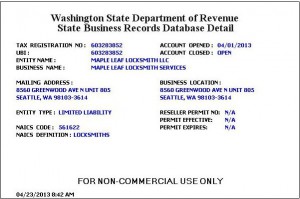Read this post and it will save you a service call from a locksmith. Consult yourself for the best way to improve security in your home or office. I sell locks to increase your security, but I will level with you: they are not the whole part of the story. Criminals and most people in general are like water: they typically take the path of least resistance. If you have an amazing $400 Mul-T-Lock deadbolt, they will go through the window. They may also go around the house and kick the basement door in. They won’t stand around picking your locks.
Therefore, when budgeting for a security increase, look at the whole picture. Do you have a balcony with an open door or window near a tree? Do you have large windows near your door that criminals could simply walk through? Are your doors hollow-core, thin, and lightweight?
There is a saying that locks only keep honest people out. I would like to amend it by also saying they keep lazy criminals out. You can work to keep slightly less lazy criminals out of your house by making sure you have a good door, and a good door frame, for your lock(s) to work in concert with.
If you have windows in or near your door that allow a criminal to reach the thumbturn of your deadbolt, you should consider buying a double-sided deadbolt or get rid of the windows.
If you are concerned about people kicking your door down, consider getting a metal or heavy wooden door that opens out with concealed hinges. To prevent bumpkeying or bumping your locks, consider hiring a locksmith to add heavy-duty springs to your locks. Ensure that your doors are well-lit and that all doors have the same level of security. It does little good to install expensive security if your neglected basement door is hollow-core and has a cheap “defiant” lock from home depot on it, and is in a dark stairway. This is ideal for thieves to pry open without direct line of sight from neighbouring houses.
A final warning concerning overall security of your home: where are your keys? Criminals know where people usually hide their keys and will check flower pots and door mats near the door. They will also obtain keys from lowlives that work in concert with them, perhaps changing your carpet or installing a new garage door opener. If you gave them a key, consider that key in the hands of the public. To prevent them coming back with that key, whenever I rekey somebody’s house i recommend that they leave one doorknob in the back of the house keyed differently than the rest of the house. Then, if you leave the deadbolt unengaged, workers can enter using the doorknob at pre-arranged times. When they are done, simply use the deadbolt. They or their friend cannot get in by simply unlocking the doorknob. They will have to either kick in the door (difficult with a well-installed deadbolt with long screws reaching the stud in the wall), pick the lock (most criminals are not this savvy) or bump the lock.
Another possibility for this scenario is to have one lock be an LFIC lock, which means that you can easily change out the cylinder to allow temporary access with a different key. When you want to disallow access with that guest key, change back to your home cylinder.
We can discuss these possibilities over the phone at no charge. Or, if I have piqued your interest we can do a walkthrough of your home and discuss the best way to increase your security and therefore your peace of mind.

